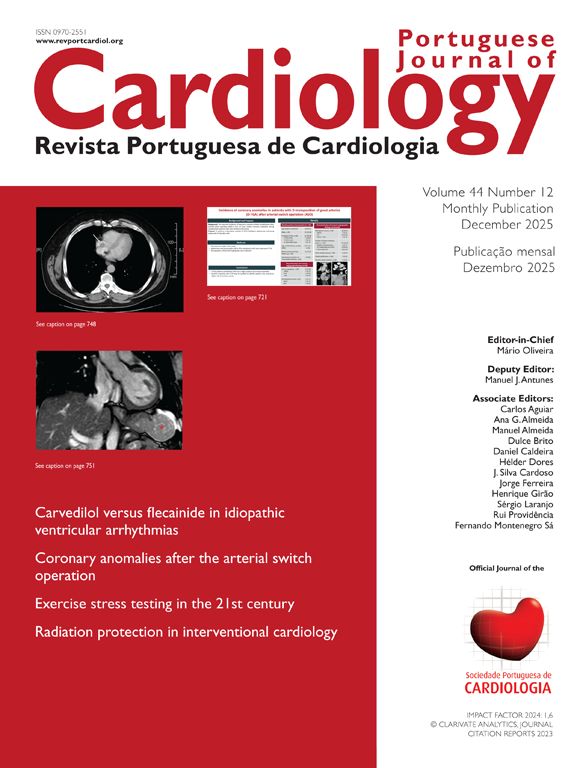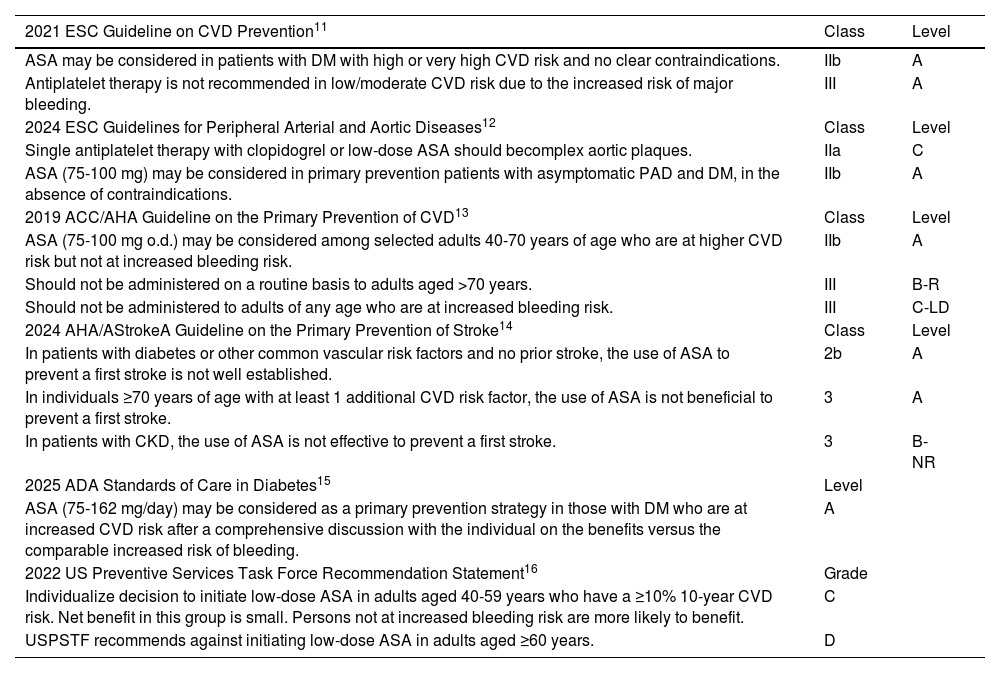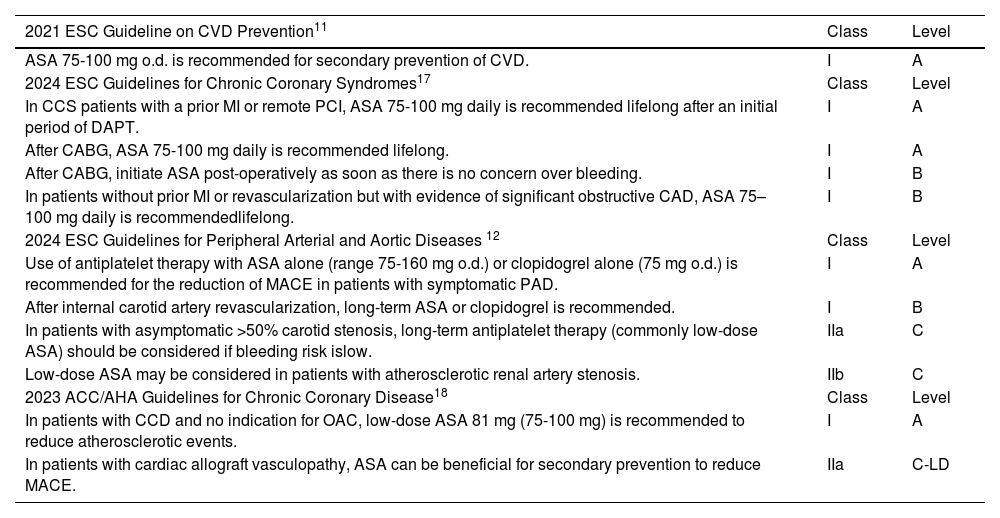Acetylsalicylic acid (ASA) was one of the first drugs to come into common usage and is still one of the most thoroughly researched drugs in the world. Over the past 25 years, the average number of manuscripts published on PubMed containing ‘Aspirin’ or ‘ASA’ in the title is about 670 per year. Over its long lifetime, ASA has been the prototype for two distinct classes of drugs: initially as the first nonsteroidal anti-inflammatory drug, and later as the foundational agent in the class of antiplatelet therapies.1 More recently, there has been considerable interest in a third possible role for ASA, namely for primary prevention and as adjuvant therapy in colorectal cancer.2
Although ASA has long been regarded as a “wonder drug,” several of its pharmacological effects have raised important safety concerns. The cyclooxygenase-1 (COX-1) enzyme —which is selectively and irreversibly inhibited by low-dose ASA (typically 75 to 100mg once daily) — plays a key role in regulating multiple physiological processes, including platelet aggregation, vasodilation of renal afferent arterioles, and protection of the gastric mucosa from acid injury. Among ASA's adverse effects, the increased risk of bleeding is particularly significant.
In primary prevention, a systematic review and pooled analysis of 11 randomized trials showed that low-dose ASA reduces the risk of major adverse cardiovascular events (MACE) by 10%, total myocardial infarctions by 11%, and total ischemic strokes by 18%, but without a mortality benefit and at the cost of 44% more major bleeds, 58% more major gastro-intestinal bleeds, and 31% more intracranial bleeds.3 The small absolute MACE reduction was closely matched by the absolute increase in major bleeding. As a result, routine use of ASA is not recommended in primary prevention (Table 1), particularly in older individuals, given the heightened bleeding risk associated with aging. Nevertheless, most clinical guidelines acknowledge that ASA may have a favorable risk–benefit profile in selected primary prevention patients with a high risk of atherosclerotic cardiovascular disease (ASCVD) and a low risk of bleeding. To identify candidates for ASA therapy better in this setting, strategies have been proposed to refine ASCVD risk stratification — such as imaging of atherosclerotic plaque burden and characteristics, as well as genetics — and to mitigate bleeding risk through approaches including the use of lower ASA doses, co-prescription of proton pump inhibitors, Helicobacter pylori eradication, bleeding risk assessment tools, and concomitant statin therapy.
Guideline recommendations on ASA for primary prevention of CVD.
| 2021 ESC Guideline on CVD Prevention11 | Class | Level |
|---|---|---|
| ASA may be considered in patients with DM with high or very high CVD risk and no clear contraindications. | IIb | A |
| Antiplatelet therapy is not recommended in low/moderate CVD risk due to the increased risk of major bleeding. | III | A |
| 2024 ESC Guidelines for Peripheral Arterial and Aortic Diseases12 | Class | Level |
| Single antiplatelet therapy with clopidogrel or low-dose ASA should becomplex aortic plaques. | IIa | C |
| ASA (75-100 mg) may be considered in primary prevention patients with asymptomatic PAD and DM, in the absence of contraindications. | IIb | A |
| 2019 ACC/AHA Guideline on the Primary Prevention of CVD13 | Class | Level |
| ASA (75-100 mg o.d.) may be considered among selected adults 40-70 years of age who are at higher CVD risk but not at increased bleeding risk. | IIb | A |
| Should not be administered on a routine basis to adults aged >70 years. | III | B-R |
| Should not be administered to adults of any age who are at increased bleeding risk. | III | C-LD |
| 2024 AHA/AStrokeA Guideline on the Primary Prevention of Stroke14 | Class | Level |
| In patients with diabetes or other common vascular risk factors and no prior stroke, the use of ASA to prevent a first stroke is not well established. | 2b | A |
| In individuals ≥70 years of age with at least 1 additional CVD risk factor, the use of ASA is not beneficial to prevent a first stroke. | 3 | A |
| In patients with CKD, the use of ASA is not effective to prevent a first stroke. | 3 | B-NR |
| 2025 ADA Standards of Care in Diabetes15 | Level | |
| ASA (75-162 mg/day) may be considered as a primary prevention strategy in those with DM who are at increased CVD risk after a comprehensive discussion with the individual on the benefits versus the comparable increased risk of bleeding. | A | |
| 2022 US Preventive Services Task Force Recommendation Statement16 | Grade | |
| Individualize decision to initiate low-dose ASA in adults aged 40-59 years who have a ≥10% 10-year CVD risk. Net benefit in this group is small. Persons not at increased bleeding risk are more likely to benefit. | C | |
| USPSTF recommends against initiating low-dose ASA in adults aged ≥60 years. | D |
Legend: ACC: American College of Cardiology; ADA: American Diabetes Association; AHA: American Heart Association; ASA: acetylsalicylic acid; AStrokeA: American Stroke Association; CKD: chronic kidney disease; CVD: cardiovascular disease; DM: diabetes; ESC: European Society of Cardiology; PAD: peripheral arterial disease; USPSTF: United States Preventive Services Task Force.
See the references for detailed explanations about the classes/grades of recommendation and the levels of evidence.
The net benefits of ASA in the management of patients with acute myocardial infarction, acute ischemic stroke or transient ischemic attack are well established and remain undisputed. In these clinical contexts, ASA prevents premature deaths and early recurrent ischemic events within a few weeks of treatment initiation, with a low number needed to treat (NNT) and minimal cost. In the context of long-term secondary prevention, a meta-analysis of individual participant data from 16 randomized controlled trials demonstrated a 19% relative reduction in the risk of major vascular events among patients receiving ASA.4 The NNT to prevent one major vascular event over one year was 67, notably lower than the number needed to harm, which was 526 for causing one extracranial major bleeding event. These findings support the strong and consistent endorsement of ASA in clinical guidelines, which uniformly assign the highest class of recommendation for its use in secondary prevention of ASCVD (Table 2).
Guideline recommendations on ASA for secondary prevention of CVD.
| 2021 ESC Guideline on CVD Prevention11 | Class | Level |
|---|---|---|
| ASA 75-100 mg o.d. is recommended for secondary prevention of CVD. | I | A |
| 2024 ESC Guidelines for Chronic Coronary Syndromes17 | Class | Level |
| In CCS patients with a prior MI or remote PCI, ASA 75-100 mg daily is recommended lifelong after an initial period of DAPT. | I | A |
| After CABG, ASA 75-100 mg daily is recommended lifelong. | I | A |
| After CABG, initiate ASA post-operatively as soon as there is no concern over bleeding. | I | B |
| In patients without prior MI or revascularization but with evidence of significant obstructive CAD, ASA 75–100 mg daily is recommendedlifelong. | I | B |
| 2024 ESC Guidelines for Peripheral Arterial and Aortic Diseases 12 | Class | Level |
| Use of antiplatelet therapy with ASA alone (range 75-160 mg o.d.) or clopidogrel alone (75 mg o.d.) is recommended for the reduction of MACE in patients with symptomatic PAD. | I | A |
| After internal carotid artery revascularization, long-term ASA or clopidogrel is recommended. | I | B |
| In patients with asymptomatic >50% carotid stenosis, long-term antiplatelet therapy (commonly low-dose ASA) should be considered if bleeding risk islow. | IIa | C |
| Low-dose ASA may be considered in patients with atherosclerotic renal artery stenosis. | IIb | C |
| 2023 ACC/AHA Guidelines for Chronic Coronary Disease18 | Class | Level |
| In patients with CCD and no indication for OAC, low-dose ASA 81 mg (75-100 mg) is recommended to reduce atherosclerotic events. | I | A |
| In patients with cardiac allograft vasculopathy, ASA can be beneficial for secondary prevention to reduce MACE. | IIa | C-LD |
Legend: ACC: American College of Cardiology; AHA: American Heart Association; ASA: acetylsalicylic acid; CABG: coronary artery bypass grafting; CAD: coronary artery disease; CCD: chronic coronary disease; CCS: chronic coronary syndromes; CVD: cardiovascular disease; DAPT: dual antiplatelet therapy; ESC: European Society of Cardiology; MACE: major adverse cardiovascular events; MI: myocardial infarction; OAC: oral anticoagulation; PAD: peripheral arterial disease; PCI: percutaneous coronary intervention.
See the references for detailed explanations about the classes/grades of recommendation and the levels of evidence.
The daily dose of ASA evaluated in randomized trials has varied widely — ranging from 50mg to 500mg in primary prevention, and from 50mg to 1500mg in secondary prevention.4 Evidence suggests that the lowest effective daily dose for long-term prevention lies between 50mg and 100mg. Higher doses have not been shown to offer greater efficacy in reducing vascular events, based on both indirect comparisons across trials using different dosing regimens5 and direct evidence from two head-to-head randomized controlled trials.67 Importantly, the optimal ASA dose does not appear to vary by age, sex, body weight, or clinical context (i.e., primary versus secondary prevention).8 In contrast, higher ASA doses have been consistently associated with increased rates of minor bleeding and major gastrointestinal bleeding.9 Accordingly, current guideline recommendations (Tables 1 and 2) predominantly endorse low-dose ASA — defined as 75 to 100mg daily — with only rare exceptions allowing for doses up to 162mg per day.
The use of low-dose ASA for secondary prevention of ASCVD is further supported by pharmacokinetic and pharmacodynamic evidence. Low doses of ASA given repeatedly once daily are sufficient to completely suppress platelet COX-1 activity because ASA irreversibly acetylates COX-1 and platelets lack the ability to resynthesize the enzyme. This allows low-dose ASA to maintain antiplatelet efficacy while minimizing off-target effects on the vasculature, kidneys, and gastrointestinal mucosa, as well as reducing the risk of clinically significant drug–drug interactions. Notably, ASA may attenuate the efficacy of medications used to manage hypertension, heart failure, type 2 diabetes, and chronic kidney disease. Employing the lowest effective dose of ASA helps mitigate these concerns.
In this issue of Portuguese Journal of Cardiology, Lopes et al. add new data to the ongoing discussion about the right dose of ASA for ASCVD prevention.10 The authors recruited a small cohort of relatively young, apparently healthy individuals, in whom they assessed the antithrombotic effect of four doses of ASA, ranging from 100mg to 1000mg, using a platelet function assay (PFA-200). This technology aspirates whole blood at high shear rates through disposable cartridges that contain an aperture within a membrane coated with either collagen and epinephrine or collagen and adenosine diphosphate. These agonists induce platelet adhesion, activation and aggregation, resulting in occlusion of the aperture and hence cessation of blood flow. The occlusion time provides a quantitative measure of platelet function. In the study by Lopes et al, the occlusion times were similar across all studied ASA doses. Although this study has significant limitations – rightfully acknowledged by the authors – its main finding is aligned with the recommendation to use a low dose of ASA for ASCVD prevention, because the antithrombotic effect of low dose ASA (100mg) was similar to that of higher doses.
Caution is warranted when interpreting mechanistic studies evaluating the pharmacodynamic effects of antiplatelet agents, as various methods yield differing levels of specificity. Several approaches have been employed to assess ASA's antiplatelet activity. ASA inhibits platelet COX-1, thereby reducing the synthesis of thromboxane A2 (TXA2), a potent mediator of platelet activation and vasoconstriction. Thromboxane B2, the stable inactive metabolite of TXA2, serves as a specific and practical biomarker for evaluating ASA's pharmacodynamic effect.8 In contrast, the platelet function analyzer (PFA) system assesses global platelet function by measuring clot formation in response to agonists that activate platelets via both TXA2-dependent and -independent pathways. As such, the PFA system does not offer a specific measure of ASA's mechanism of action.
In summary, more than a century after its introduction, ASA continues to be a cornerstone of secondary prevention in ASCVD, where its benefits far outweigh the risks. The accumulation of robust clinical trial data, mechanistic insights, and real-world evidence consistently supports the use of the lowest effective dose — typically 75 to 100mg daily — to optimize efficacy while minimizing adverse effects.
Conflicts of interest.






